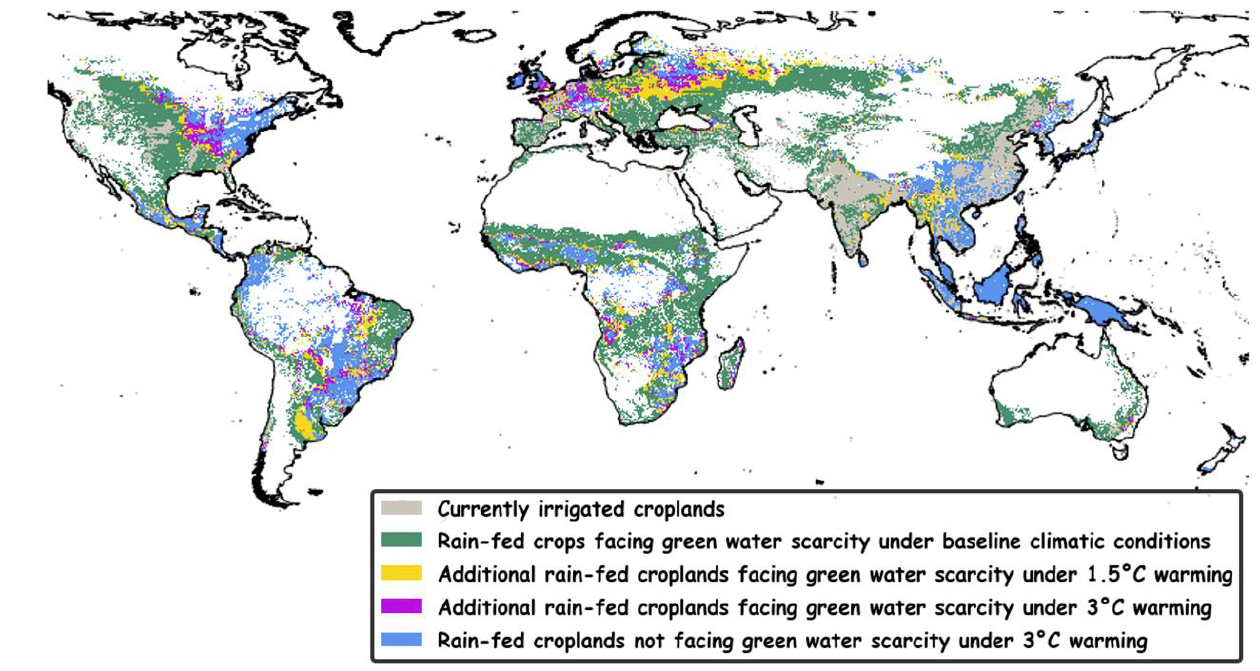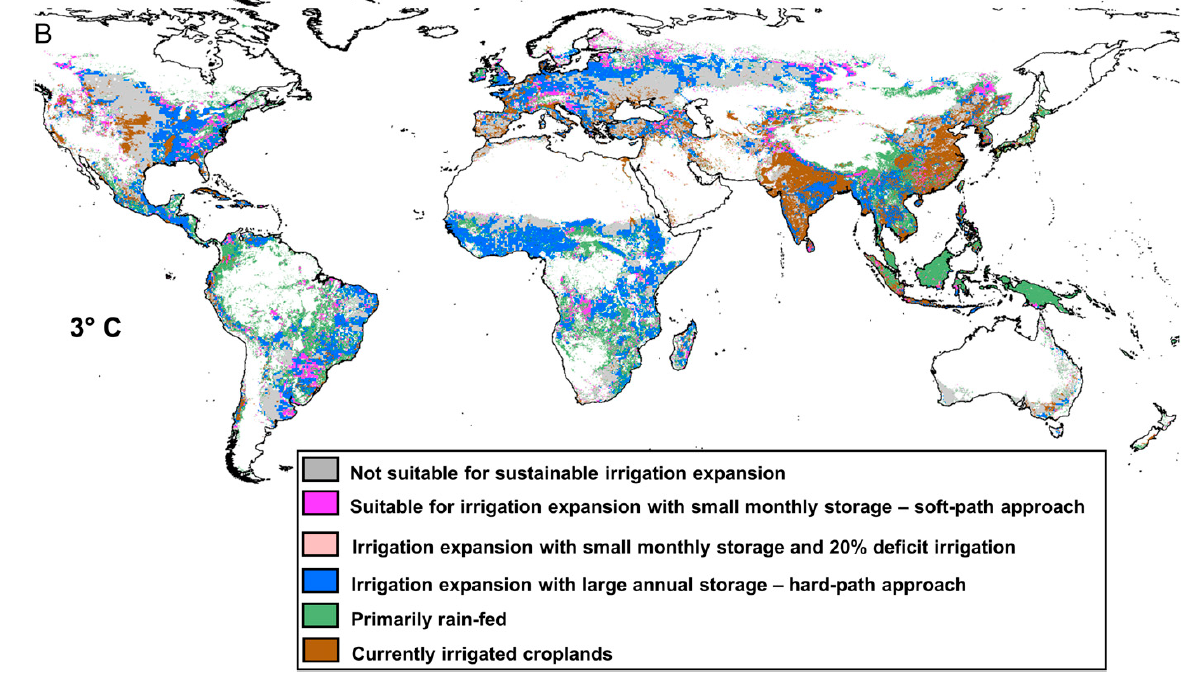Listen here on Spotify | Listen here on Apple Podcast
Episode recorded on November 20, 2023
Episode released on February 22, 2024
 Lorenzo Rosa is a Principal Investigator at the Department of Global Ecology at Carnegie Institute for Science and an Assistant Professor (by courtesy) at Stanford University.
Lorenzo Rosa is a Principal Investigator at the Department of Global Ecology at Carnegie Institute for Science and an Assistant Professor (by courtesy) at Stanford University.
Highlights | Transcript
Scarcity is defined as demand exceeding supply and can be quantified at different space and time scales.
Water scarcity: water demand exceeds annual renewable water supplies considering environmental flows (ecosystem demands).
Food scarcity: four pillars:
- Availability: enough food to meet demand
- Accessibility: have economic means to buy food
- Utilization: nutritional value of the food to meet biophysical requirements; and
- Stability: permanent and stable access to food.
Global analysis: solve water balance at pixel level (10 – 50 km pixels). Precipitation minus evapotranspiration = water in rivers, lakes, aquifers.
Human water use:
- Irrigation: 90% of global water consumption, 70% of global water withdrawal
- Water use for domestic, industrial, manufacturing, and energy
About 60 - 80% of global water should be retained for environmental flows for ecosystem health.
Green water scarcity: relates root zone soil moisture from precipitation and cannot be used by humans, only by plants for rainfed agriculture (Fig. 1; He and Rosa, PNAS Nexus, 2023).
About half of global crops face green water scarcity, projected to be amplified with climate change
Rainfed croplands: 80% of global cropland, 60% of global food production (Rosa, ERL, 2022)
Blue water scarcity, mostly irrigation, human water use exceeds renewable supplies.
Irrigation: 20% of global cropland, 40% of global food production (Rosa, ERL, 2022).
Irrigated cropland are twice as productive as rainfed cropland (Rosa, ERL, 2022).
Climate change scenarios: 1.5°C, Paris Agreement climate target relative to pre-industrial era.
3°C, business as usual
Green water scarcity under 1.5°C warming:
- additional 100 million hectares affected from current 400 M hectares (mostly Russia, Argentina, Ukraine, and Midwest US)
- number of people impacted: 340 M people
Green water scarcity under 3°C warming:
additional 150 million hectares affected relative to baseline (NE US and Russia)
500 million people affected relative to 1.5°C
Temperature increases with climate change could result in agricultural expansion in northern latitudes close to the poles, Russia, Canada, wheat, and barley (winter crops), food security and trade implications.
Adaptation strategies to green water scarcity (He and Rosa, PNAS Nexus, 2023):
- Reduce evapotranspiration (ET): no till farming, mulching, cover crops, agrivoltaics, weeds (nonbeneficial ET), less water intensive crops (wheat versus corn, sorghum, and millet relative to wheat)
- Increase infiltration: terracing, contouring, pitting (e.g., Loess Plateau)
Blue water scarcity: quantify irrigation water consumption, crop water model, water demand divided by green water, if insufficient, need irrigation (Rosa et al., ERL, 2018).
Water balance solved at pixel level, ET from Penman Monteith equation
Crop type, growing season.
Water availability: precipitation, digital elevation model, soil type, estimate runoff (Precipitation – ET), consider upstream human water use (flow accumulation algorithm)
Economic water scarcity: 25% of croplands (Rosa et al., Sci Adv., 2020)
Irrigation: important strategy to climate change (insurance companies requiring irrigation to ensure reliable production (Rosa, ERL, 2022).
Irrigation expansion potential (Fig. 2; Rosa et al., PNAS, 2020): Ethiopia, Kenya, Armenia (where the World Bank is financing the construction of irrigation schemes), Russia, Brazil, Nigeria, India, North East US
40 M ha irrigation expansion, humid eastern US
Food production required to double by 2050 to meet demand (Beltran-Pena et al., ERL, 2020)
- Intensification: especially Global South, increase irrigation, fertilizer applications, closing yield gap, sustainable intensification
- Extensification: deforestation in Amazon, northern latitudes
Reduce food demand, changing diets:
Change diets, e.g., decrease meat consumption
Reduce food waste (currently 40% of global food), saves virtual water and energy
Control population, e.g., in Sahel (Graves et al., Nature, 2019)
Store water to resolve temporal disconnects associated with increasing amplitude of water availability (winter supply and summer demand) (Schmitt, Rosa, Daily, PNAS, 2022)
Large dams, currently 6,000 large dams, another 3,000 planned or under construction
Small dams, check dams
Groundwater storage (managed aquifer recharge) (Scanlon et al., NREE, 2023)
Databases provided with analysis:
Irrigation water requirements by year and crop under current and future climate
Extent of blue, green, and economic water scarcity
Rely on irrigation maps from year 2000, need to update them, data gap


DATASETS:
- Global agricultural green water scarcity under climate change (He and Rosa, PNAS Nexus, 2022):
https://zenodo.org/record/7187381
- Monthly global green-, blue-, and economic-water scarcity (Rosa et al., Science Advances, 2020):
https://zenodo.org/record/3677485
- Global sustainable irrigation expansion potential under current and future climate conditions (Rosa et al., PNAS, 2020):
https://zenodo.org/record/3995044
- Unsustainable virtual water flows embedded in international food trade (Rosa et al., ERL, 2019):



